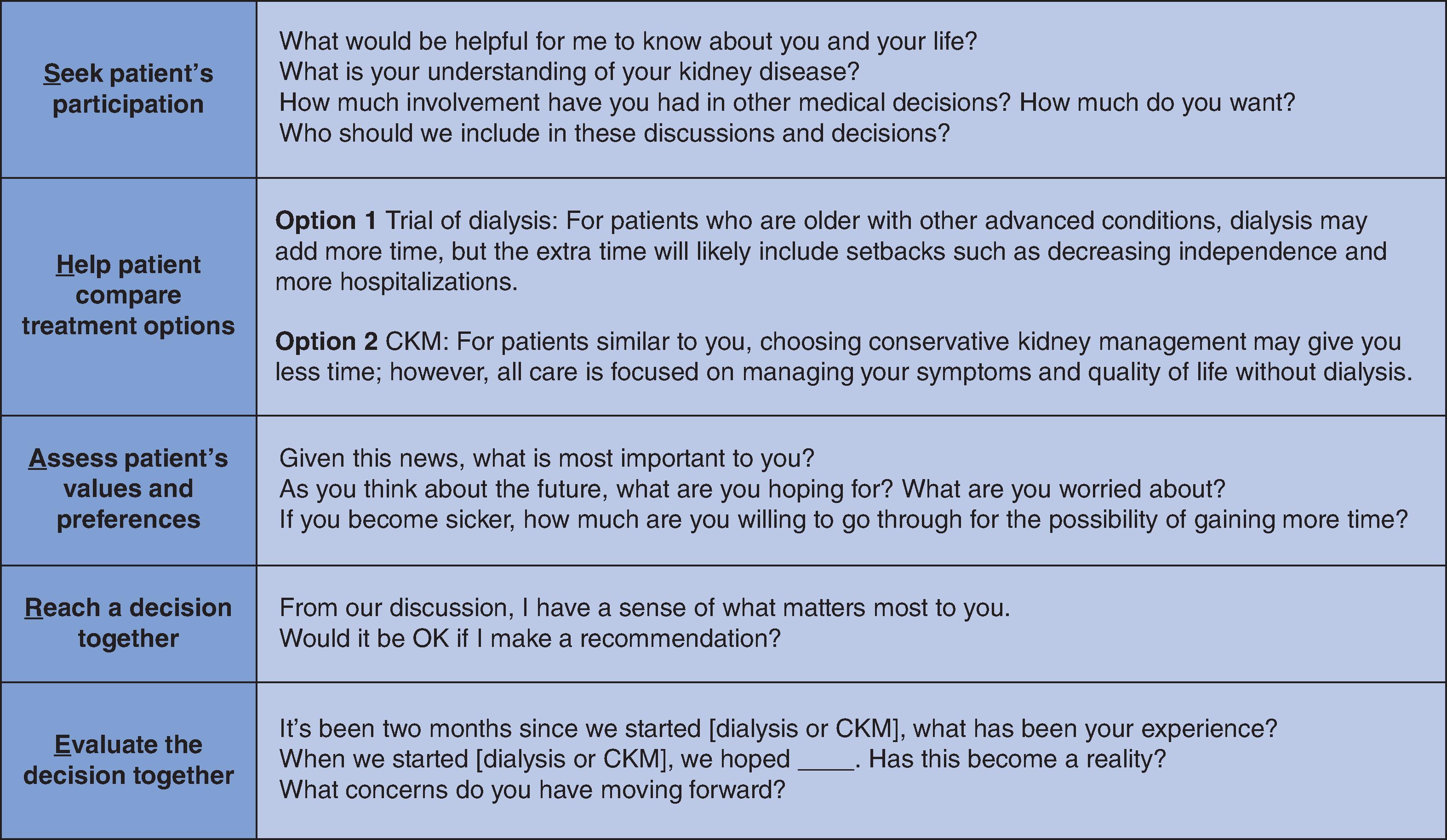Physical Address
304 North Cardinal St.
Dorchester Center, MA 02124
Dialysis extends and improves the lives of many patients with advanced kidney disease. It frequently serves as an effective bridge to kidney transplantation. However, for some patients, dialysis does not add meaningful time and negatively impacts quality of life. Conservative kidney management (CKM) is a holistic, team-based approach to treating end-stage kidney disease (ESKD) without dialysis. CKM includes medical management of chronic kidney disease (CKD), symptom management, psychosocial and spiritual support, advance care planning, and end-of-life care. Through shared decision making and patient-centered care, CKM emphasizes quality of life and an individualized care plan that adapts to the evolving needs of the patient over time.
In low-income countries, kidney replacement therapy may not be available for a variety of reasons and a nondialytic approach is not chosen but occurs by default. This is called “choice-restricted conservative care.” In most high-income countries, kidney replacement therapy is widely available and patients who develop kidney failure have the option of electing dialysis or CKM. The principles reviewed in this chapter pertain to resource-rich settings, where there is no scarcity of dialysis access and patients can select the therapy that best fits their values and priorities.
CKM is an ideal treatment approach whenever the burdens of dialysis are likely to outweigh the benefits. CKM may be appropriate for those of advanced age, patients residing in long-term care facilities, and patients with a serious illness other than kidney disease such as heart failure, cirrhosis, dementia, advanced cancer, or advanced vascular disease. These patients generally have limited survival and often have goals and values that do not align with their anticipated trajectory on dialysis. With CKM, patients and clinicians focus on quality-of-life, whereas the traditional focus of dialysis is on biochemical optimization. Evidence shows that patients with kidney disease and other serious illnesses often prioritize relief from pain and other symptoms, preservation of functional status, and maximizing time at home with loved ones. Therefore, when discussions of dialysis and CKM highlight the different emphasis of each pathway, some patients choose CKM for its deliberate and systematic focus on quality of life.
Shared decision making (SDM) is the cornerstone of CKM. SDM can be conceptualized as the meeting of two experts—the patient as expert on their life and values, and the clinician as expert on medical prognosis and options—with the goal of working together to make the best healthcare decision for the patient. This highly collaborative approach contrasts traditional paternalistic and informative models. In paternalism, the clinician is viewed as the expert who “knows best” and accordingly dictates the course of action based on the patient’s medical condition. In an informative approach, the clinician provides information and then expects the patient to make his or her own choice. SDM overcomes the limitations of both of those models by empowering both clinician and patient to explore treatment options together in the context of a relationship where both parties’ input is valued and applied.
SDM is useful in any conversation about treatment options for kidney failure. For example, clinicians might use SDM to help patients pick between in-center hemodialysis and peritoneal dialysis. The goal of SDM is to have patients choose a treatment that best fits their preferences and lifestyle. Similarly, with regards to CKM, SDM is used to explore whether initiating dialysis is a fitting choice for the individual patient. In one qualitative study of US dialysis patients over the age of 65, patients overwhelmingly felt they had not made the choice to initiate dialysis. Rather, they believed that the alterative to dialysis was imminent death, or that their doctor had made the decision for them. Initiating dialysis should be a choice, and the alternative is not always imminent death. SDM ensures that choosing a therapy for kidney failure is an active and explicit process, not a default. For these reasons, the Renal Physicians Association (RPA) and Choosing Wisely Campaign recommend clinicians and patients engage in SDM for this complex deliberation.
The SHARE Approach is a five-step process for SDM framework endorsed by the Agency of Healthcare Research and Quality ( Fig. 58.1 ). Steps include (1) S eek the patient’s participation; (2) H elp the patient explore and compare treatment options; (3) A ssess the patient’s values and preferences; (4) R each a decision with the patient; and (5) E valuate the patient’s decision. One of the key communication techniques in SDM is the skill of Ask-Tell-Ask, in which the clinician ensures a two-way exchange that starts and ends with eliciting the patient’s perspective, sandwiched around medical information or recommendations from the clinician. Ask-Tell-Ask is useful during every step of the SHARE Approach outlined below. Fig. 58.1 shows an example of this technique.
Seek the Patient’s Participation SDM should begin with an exploration of the patient’s illness understanding, prognostic awareness, and desired level of involvement in the decision-making process. Open-ended questions such as “What is your understanding of your kidney disease and overall health?,” provide a helpful foundation for the rest of the conversation, in which the clinician attempts to gain an understanding of the patient’s experience, culture, and expectations. Some patients may defer the decision making to a loved one or may request a clinician-led approach that is more directive.
Help the Patient Compare Treatment Options After seeking the patient’s participation, a discussion of his or her anticipated clinical trajectory with and without dialysis is useful. Helping patients understand the risks and benefits of a treatment option involves sharing prognostic information. Prognostication and important considerations in CKM such as survival, quality of life, and intensity of end-of-life care are discussed below.

Become a Clinical Tree membership for Full access and enjoy Unlimited articles
If you are a member. Log in here